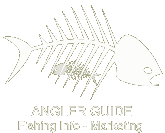 |  |
|
Navigation - Business - Great Lakes - Great Plains - Northeast - Northwest - Rocky Mountains - Southeast - Southwest - Technology - Trophy Catches
|
“This is exactly what the Natural Resources Board and the Legislature expected us to do with this rule: respond to citizen reports of new invasives, check it out, and if it’s on the prohibited list, get out there as quickly as possible develop a containment and control strategy,” said Department of Natural Resources Secretary Matt Frank. “If we can get on it quickly, we have a much better opportunity to eradicate new introductions from the state.”
The crayfish was confirmed Aug. 26 by Milwaukee Public Museum experts as a red swamp crayfish, a Louisiana native raised by southern aquaculture operations, often sold to school teachers for their classrooms and to restaurants. This marks the first time the crayfish has been documented in Wisconsin, and its arrival is of particular concern because it reproduces prolifically and can move overland, increasing its chances of spreading on its own. Since the discovery of the crayfish, DNR fish biologist Sue Beyler and aquatic invasive species staff have been setting traps and surveying nearby waters to determine whether it’s a reproducing population and whether the crayfish have spread, important information for eradicating it. They are developing a control plan that will explore options such as trapping and chemical treatment to eradicate the crayfish, and also developing a long-term monitoring plan for area waters. Signs have been posted around the pond to alert boaters, anglers, and other potential users of the park where the pond is that the invasive species is present and that it’s illegal to move live crayfish from the pond. Because it can move over land as well as in the water, there is concern the red swamp crayfish could spread to the nearby Menomonee River, a tributary of Lake Michigan. Red swamp crayfish feed on aquatic plants, snails, insects and fish and amphibian eggs and young. They can reduce amphibian populations through direct predation and competition for habitat and can cause declines in native crayfish species. Reports from Washington state, where the crayfish has infested several inland waters, also suggests its rampant feeding and burrowing can release phosphorus and other nutrients, leading to more algae blooms that decrease water quality and recreational use of a water. DNR invasive species officials are also moving on a number of other recent reports of new invasive species. A rapid response plan is already underway in Walworth County to eradicate an aggressive invasive species, yellow floating heart, from a pond next to Delavan Lake by draining the water, dredging it, and installing a liner. Another species on the prohibited list, brittle water nymph Najas minor, was just confirmed late last week in Mason Lake, bordering Adams and Marquette counties and work is beginning there with partners to develop a control plan. “We’ve had good success in the recent past in working with partners and landowners to control new introductions, and hope those efforts can be a good model for dealing with these new crayfish and other newly identified invaders” Frank said. One recent success was the apparent eradication of Hydrilla, another aggressive invasive aquatic plant now on the prohibited list, after a Marinette County landowner reported in 2007 an unusual plant in her private pond. Soon after samples were confirmed by University of Wisconsin Herbarium, the landowner, the county, the DNR and the Department of Agriculture, Trade and Consumer Protection and federal agencies worked to develop a containment and control plan. With a state Aquatic Invasive Species Rapid Response Grant and cooperation of the pond owner, Hydrilla was contained using an herbicide treatment to eliminate plant growth and drain the pond to destroy Hydrilla tubers by freezing over winter. To date, Hydrilla has not been identified in the pond nor surrounding waters. FOR MORE INFORMATION CONTACT: Sue Beyler (262) 574-2121; Heidi Bunk (262) 574-2130 for red swamp crayfish; Jeff Bode (608) 266-0502 for general aquatic invasive species; Kelly Kearns (608) 267-5066 for the new invasive species rule; or Lisa Gaumnitz - (608) 264-8942
Comments
«Back | News Home
| |||||||||||||||||||||||||||||||||||
